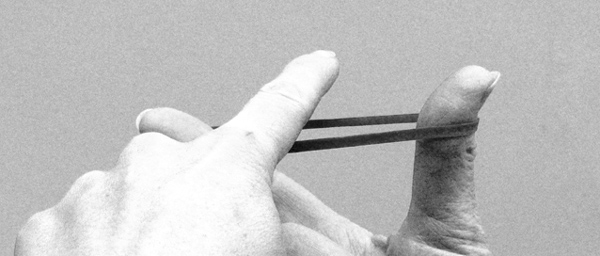Basics of sound and acoustics
Everything vibrates. A glass will vibrate when tapped, the ground vibrates when a lorry passes.
Get a thick rubber band and loosely stretch it between your first finger and thumb. Pluck the band gently as if it is a guitar string and watch the vibrations you have made. All musical instruments produce sound as vibrations.
We can hear these vibrations, as well as feel them, when they are carried to our ears as sound waves. These sound waves travel through air. The vibrating rubber band causes the air around it to vibrate in the same way that the band is vibrating, these travel just like ripples in a pond, but in all directions, outwards until they hit something - like your ear, or a wall or a microphone, or until they just run out of energy and disappear.
The inside of your ear is very sensitive to these sound waves and it transmits the pattern of these waves to your brain which sorts them out into sound - this is hearing.
Because the vibrations were the same pattern as the movement of the rubber band, the sound you hear is the sound of the rubber band being plucked.
The inside of a microphone picks up the sound waves and turns them into electrical signals which carry the pattern of the original sound waves. The electrical signals can go to headphones or a loudspeaker; or be recorded for playing back later.
The electrical signals make the headphones or loudspeaker vibrate to produce the same patterns of sound which reached the microphone. These vibrations travel through the air to your ear and you hear the sound waves that the microphone originally picked up.
Music is a combination of all the different vibrations being made by all the instruments in the band, not just a drum or guitar but also the singer's voice. When you speak, the vocal cords in your throat vibrate and move the air which everybody's ears then pick up and understand as your voice.
Because sound is really moving waves of air, it can go anywhere that air can go; that's why you can speak to someone round the corner or shout to someone in an upstairs room.
Because a microphone detects these vibrations of air waves we need to protect it from the wind. The sound vibrations can be very tiny and a gust of wind on the microphone will drown everything else out and make it sound like a nasty rumble.
You wouldn't hear any sound on the moon because there is no air to carry the sound waves!

